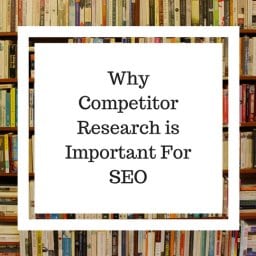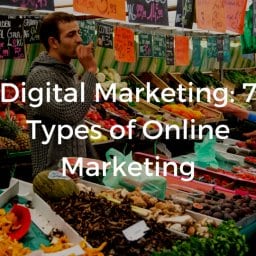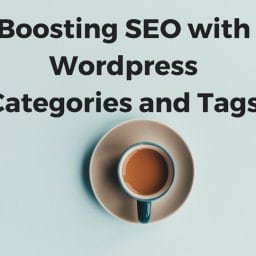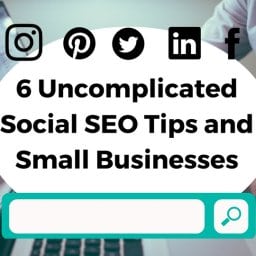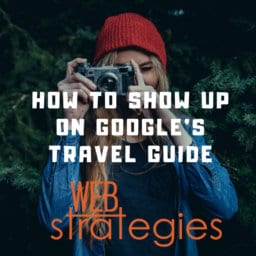Let’s debunk some Search Engine Optimization (SEO) myths. SEO can be confusing and because of that confusion, myths can form based on mixed understandings and false assumptions. One thing we do know is that it’s important and a must in order to improve your rankings. Organic SEO rankings is a combination of all your online marketing from local directories to websites and social media. Focusing on your website’s SEO settings should be a priority.
Below are a few Myths from HubSpots list of 22 SEO Myths we should leave behind in 2019.
The more pages I have, the better
” Some people have the notion that if you have more pages, you will get more traffi to your website. Just like link-building, creating content just to have more pages isn’t enough. Make sure you are focusing not just on quantity, but on quality, too. If you don’t have good content, you will not rank well and all those pages you created won’t help your cause. Logically, you would think that the larger the footprint of your website, the better you would rank – but that’s simply not true.
First, not everything you publish gets indexed (and rightfully so). Second, sometimes, pages get indexed, but they don’t remain in the index. For example, search engines may omit your page to users because it is too similar to content already indexed. And third, just because you have pages indexed doesn’t mean they will drive qualifid traffic and leads.
Unfortunately, those who strive to have lots of pages on their website also tend to overlook the quality of that content — and this can be damaging. First introduced in February 2011 , Google’s Panda algorithm has been getting better and better at detecting content that does not help users. And in March 2018, Google confimed (via Twitter) that its still comitted to policing quality through the release of a broad core algorithm update that rewarded sites with informative search results.
The lesson? To avoid any drops, never let quantity overtake quality”
Good user experience is an added bonus, not a requirement.
” As Google began to provide better results to its users, they were ableto invest more in their search algorithm. Through this investment, theywere able to qualitatively assess the effectiveness of their algorithm, andthen make quantitative adjustments to the weights of ranking signals for particular query intents. As a result, a good user experience is more important than ever.
It makes sense. If Google sends you to a webpage, they want to make sure you have a good experience on that page. They are after all a business too, and thus they want to delight their users. Think about it from the search engine’s point of view: they didn’t create the webpage themselves, but they are endorsing it. They need to ensure that users have a good experience on that page to keep people coming back to Google.
To improve your website’s user experience, you’ll want to focus on things like page load time, bounce rate, time on page, page views per visit, and how far a person scrolls down the page.
As long as you satisfy the number one goal of creating quality content that people can easily digest and enjoy, your content will naturally satisfy a search engine’s ranking algorithms, helping your content to organically rise to the top.”
Local SEO doesn’t matter anymore.
” This myth couldn’t be further from the truth. If you’re a local business, optimizing for local search won’t only help you get found, but it will help you get found by people who are nearby and more likely to buy from you. And if you’re a national or global business trying to rank for a local term, you might as well give up. Local SEO is that important now.
Looking forward, Google will continue to take steps to bubble the best local content to the surface of search results. Need some proof? In July of 2014, Google took a major step in this direction with the release of its Pigeon algorithm. The algorithm treats local search rankings more like traditional search rankings, taking hundreds of ranking signals into account. Pigeon also improved the way Google evaluates distance when determining rankings.
According to Moz’s 2019 “State of Local SEO Industry Report,” 64% of surveryed marketers agree that Google is becoming the new local business “homepage,” displaying more information about a business directly within the SERP than ever before. This means that local businesses need to have a plan in place for managing this information to ensure it’s both accurate and descriptive.”
Images don’t require any optimization.
” For a long time, it was okay to neglect the images on your site and still rank without using alt text and image file names to boost your page relevance. On-page SEO is more important than ever, so excluding images will prevent your website’s SEO from being the best it can be.
Search engines cannot see images on websites, so it is important to give the image an alt text and relevant file
name to ensure Google knows what the image is about. By not creating this text, you lose a huge opportunity to be as
visible as possible online.
It helps Google if the text on the page where the image is located mentions the image, too, so always try to reference your images in your text, close to where it lives on the page, using keywords similar to the alt text/file name of the image. Google also recommends providing descriptive titles and captions for your images, so consider adding
those when relevant.
The image types Google can index include BMP, GIF, JPEG, PNG, WebP, and SVG, so be sure to only use these image file types on your website to make it possible for Google to index them. Name your image files something that is indicative of what the image is itself, rather than something like IMG2394870.jpg. Yes, keywords matter
here!”
Voice search will never stick.
” Think voice search is just a trend? Think again. Over the past year, Amazon, Facebook, and Google have all announced the release of either new or new versions of their own video smart speakers: voice-assistant-enabled devices that are also equipped with video capabilities.
And before video smart speakers came about, there were the original voice assistants — the Siris, Alexas, and Google Assistants — on call to answer our questions, schedule our reminders, and queue up our phone calls.
As a result of this convenience, at least 20% of all mobile search queries on Google are done by voice: a number that many predict will continue to rise.
Of course, it’s clear that this technology is still a work in progress — we’ve all had a frustrating Siri experience before — but that doesn’t make it any less important for marketers to begin exploring the space.”
My homepage needs a lot of content.
” Have you ever come across a homepage littered with copy? Or, on the opposite spectrum, a homepage with barely any content at all? Think of your homepage as the gateway to your business. Visualize it! This is your chance to make a fist impression and convey what you’re all about. Maybe your value proposition is simplicity – in that case, just a single login makes sense (especially if your name is Dropbox).
For most marketers, however, there is a need for a bit more content and context than that. Your homepage content should be long enough to clarify who you are, what you do, where you’re located (if you’re local), your value proposition, and what visitors should do next. These visitors should leave satisfid, not overwhelmed or underwhelmed – and certainly not confused.”



